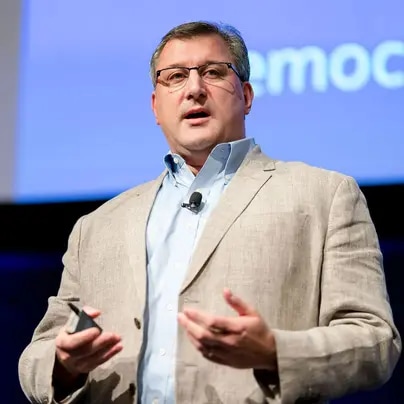Only AI defenders can protect us from AI attackers

The breakthrough by Alan Turing and his team of Enigma codebreakers came through exploiting the weakest link in any security system – humans.
Time-pressed and careless German Enigma operators left a trail of clues that humans and machines working together were able to crack, which ultimately changed the course of the Second World War.
It’s fitting that the UK’s AI Safety Summit will be held at the site of that triumph at Bletchley Park on November 1-2. The future of global security hinges on whether we can harness the power of AI while building sufficient guardrails for its responsible and ethical use in defense and civilian settings.
That’s because criminals are already deploying AI to carry out cyberattacks on critical infrastructure from telecom networks to energy grids with hackers targeting banks, utility companies and Britain’s National Health Service (NHS).
Nokia’s research shows the number of botnet devices responsible for Distributed Denial of Service (DDoS) attacks increased five-fold over the past year to around a million devices. And DDoS is only one type of cyber threat. Our most recent data shows the UK was the fourth most targeted country by cyber criminals after the US, China and Brazil in terms of the volume of malicious traffic.
Whether it is nation state actors, criminal gangs, or hackers motivated by political or financial gain there are tens of thousands of cyber-attacks taking place every day. Such is their scale and sophistication that humans, on their own, can’t respond quickly enough.
Only AI can protect against AI.
Today’s best defenses for communication networks are software solutions incorporating AI. This enables the rapid detection of cyber-threats and real-time responses. But it is a game of cat and mouse with cyber criminals. That’s why security and privacy are front and center of all our AI research along with ensuring AI is used fairly, transparently, sustainably and accountably. This all has to start at the design stage, and just down the road from Bletchley, at Nokia Bell Labs’ Cambridge campus, our scientists are playing a leading role in this responsible AI research.
It's not just cyber security where we have to strike the right balance between AI’s potential for progress and the possibility of AI being used for harm.
While much of the attention has been on generative AI, and the uncanny ability of ChatGPT to mimic human language use, the AI subset of machine learning has already been quietly transforming industries such as agriculture, energy, logistics and manufacturing. This “Industrial AI” is helping farmers water their crops at the optimum time with less waste, helping maintenance workers fix offshore wind turbines safely and helping factory employees work alongside autonomous robots effectively.
Early-adopter companies of digital tools, with embedded AI elements, have reported significant productivity and efficiency gains. And we are only at the start of this wave of industrial digitalization. It could bring a global economic boost – if we get the regulation right.
Nokia’s hope is the UK summit will accelerate the development of an international AI governance framework, which is proportionate to the risks. For instance, the use of AI to increase the energy-efficiency of a medical device is relatively low-risk. But AI coming into contact with a person’s medical records carries a different type of risk altogether so requires different types of protections.
It’s vital the UK, G7 and UN initiatives under way complement each other so AI is developed securely, ethically and responsibly around the world. We need to ask: how do we protect individuals, organizations and nations from potential AI threats and harms without restricting responsible AI innovation and limiting the chance of finding solutions to global challenges such as climate change, or the next pandemic?
Call it a Turing Test of sorts. Only, this time it’s humans who need to demonstrate our collective intelligence.
